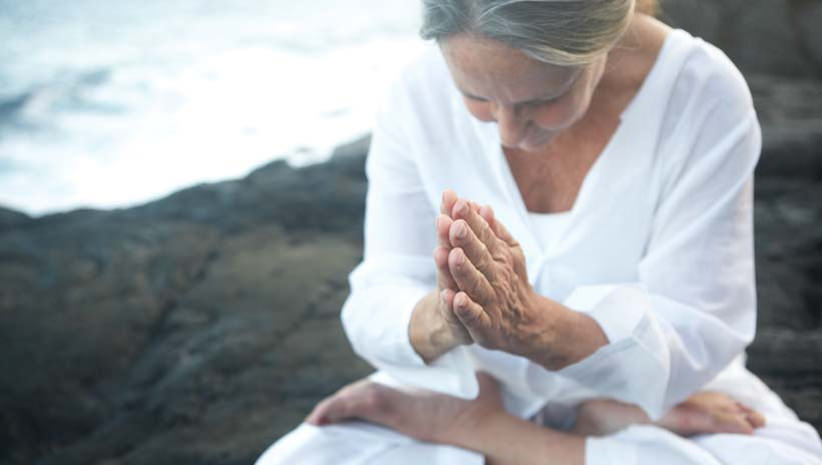
Wellness travel that includes yoga and meditation is more than a trend — it has become a modern-day necessity. If you’ve ever thought or uttered the phrase, “I need a vacation,” you’re certainly not alone.
As technology continues to advance, the pace of our lives continues to speed up. In response, our need to slow down internally is even more necessary for day-to-day survival. As passionately as we work to achieve, we also need to rest and enjoy our free time. If we don’t, we risk becoming out of balance and confronting the ever-dreaded “Burn Out.”
Getting away can be essential to re-establish our inner balance and sanity. But what kind of vacation can we take where we can relax, recharge, and feel more at peace with our lives in just a few days?
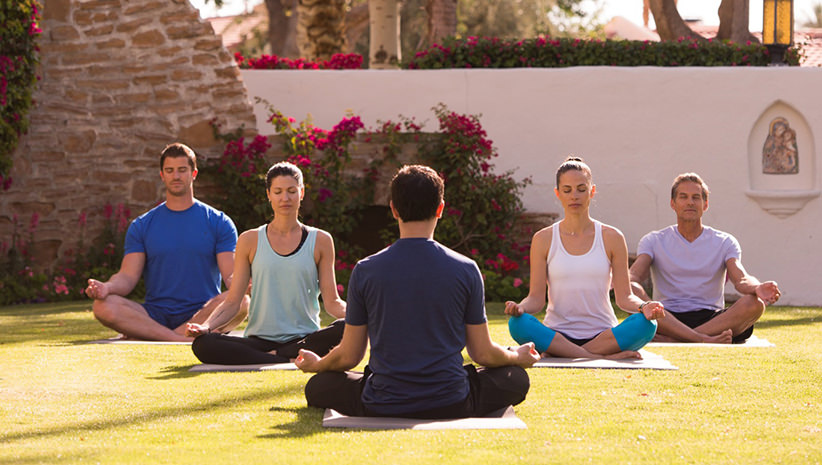
Photo courtesy of La Quinta Resort & Club, A Waldorf Astoria Resort
A New Version of an Old Model: Wellness Tourism 2.0
Embedded within the burgeoning $16 billion dollar a year yoga industry is a new version of an old model that has become increasingly popular: Yoga and Meditation Retreats, aka Wellness Tourism 2.0.
The Global Wellness Institute (GWI) estimates from the period 2015-2020, the largest projected growth sector in the five main categories of wellness (Spa, Wellness Tourism, Thermal/Mineral Springs, Workplace Wellness, and Wellness Lifestyle Real Estate), will be Wellness Tourism.
It is expected to grow annually by 7.5% (compared to conventional tourism’s 3.4% annual growth rate) and will account for $808 billion dollars in the United States alone by 2020. Naturally, this increase in popularity for wellness retreats can directly, or perhaps indirectly, be attributed to the rise of interest in yoga and meditation practices and retreats worldwide.
Just pop into any local yoga studio and you’ll see a collection of flyers for upcoming retreats. Headlines frequently read, “Join us on an unforgettable, magical, and transformational yoga journey to _____ (insert an exotic paradise-like location) where we’ll do yoga twice a day, eat yummy, nourishing, organic food, meditate and participate in other wellness-based and fun activities, and escape into a world where you can become the person you’ve always wanted to be.”
Sound familiar?!?
Whether it’s an adventure-based shamanic yoga and surf retreat in Costa Rica, a spiritual delight for the senses in India or Bali, a decadent culinary and wine get-away in Italy, or a peaceful local relaxation sanctuary at an oasis like Palm Springs, yoga and meditation retreats offer a plethora of experiences and opportunities to help people find themselves.
Yet, yoga and meditation retreats are actually nothing new within the field of wellness travel. They’re simply a modernized rebranding of something that already existed for a long period of time.
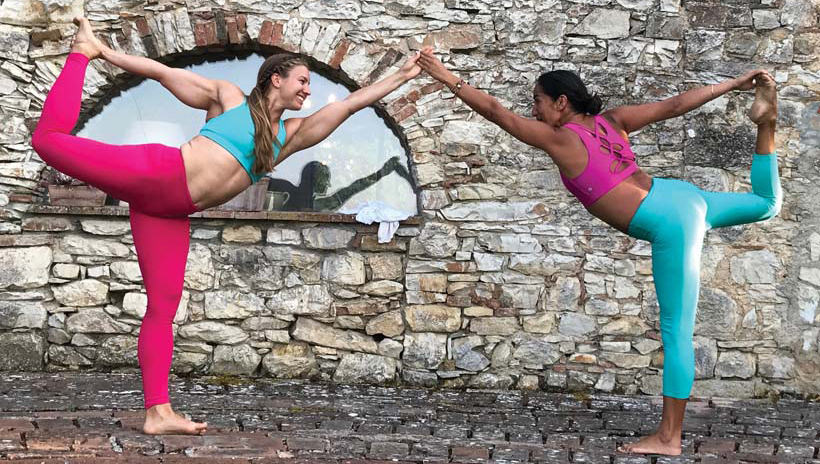
The History of Wellness Retreats
According to researchers Melanie Smith and Catherine Kelly, wellness retreats are “One of the most ancient forms of tourism if one considers the scrupulous attention paid to well-being by the Romans and Greeks, the quest for spiritual enlightenment of Mediaeval pilgrims, or the medical seaside and spa tourism of the 18th and 19th century European elite.”
Whether people retreated for health or medical purposes or for spiritual enlightenment, it can safely be assumed that this concept has been going on since Western societies became civilized.
Moreover, the latter falls in line with India’s storied tradition of spiritual seekers. Growing up in the Kriya Yoga tradition of Self-Realization Fellowship, I was personally raised on some of the stories of the great saints of India like Ramakrishna, Neem Karoli Baba, Mahavatar Babaji, and, of course, Paramahansa Yogananda. Yogananda-ji, author of the famed classic, Autobiography of a Yogi, often wrote about how he longed to visit the Himalayas to search for and find the Holy Ones of India’s mystical traditions high up in the mountains.
This type of existentially motivated tirthayatra (pilgrimage) retreat has interested many spiritual seekers throughout history. According to Richard Sharpley and Priya Sundaram in Tourism, A Sacred Journey, pilgrimage “has been an element of Indian social life since ancient times.”
What’s more, the Kerala region of Southwestern India has been a haven for healing people’s physical dukha (suffering) since the tradition began. It is said to be the place where Ayurveda was born at least 5,000 years ago. Centers there have provided medical escapes and extended panchakarma wellness retreats to rehabilitate people’s overall health since time immemorial.
Furthermore, Kerala-based Ayurvedic and yoga retreats have currently reached a historical pinnacle of popularity.
Thus, whether in ancient India [in the East] or in ancient Greece and Rome [in the West], the concept of a retreat, or of escaping from society for health, healing, or holiness, is deeply rooted within each of us as human beings. They’ve been an historical hallmark of self-care and wellness before statistics on these kinds of practices even existed.
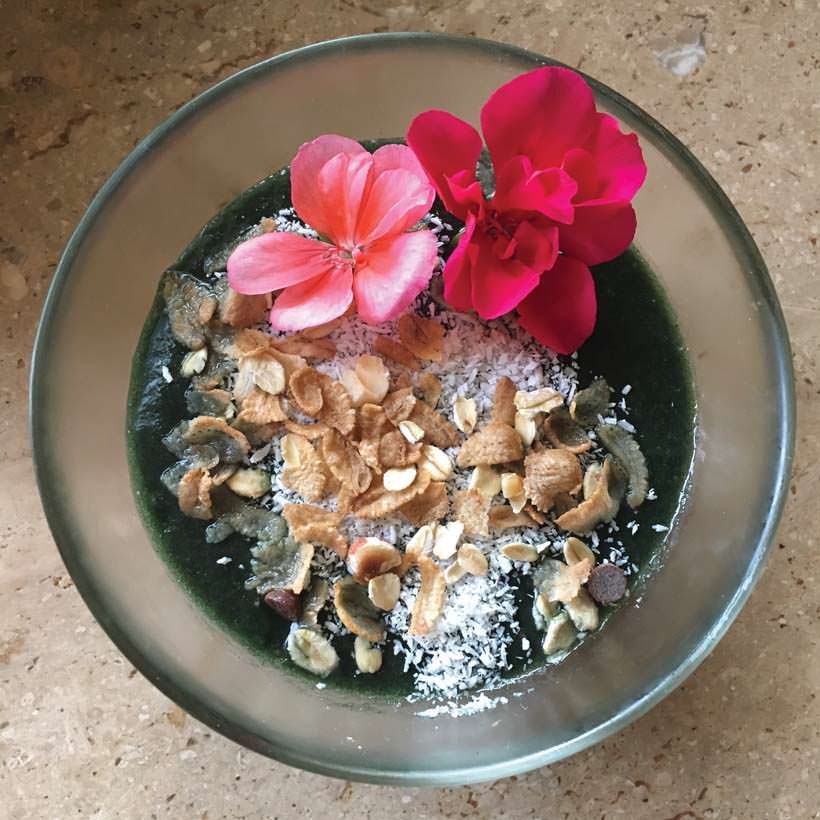
The Evolution and Expectations of a Yoga and Meditation Retreat
People often have preconceived notions of a yoga or meditation retreat. These commonly include images of long-haired hippies dressed in white, eating dhal and rice and drinking komboucha, chanting all night near a nag champa incense and sage-scented fire. However, in today’s modern yoga environment, the actual picture is far different.
Each retreat is unique and carries a specific energy and theme. When choosing your adventure, ask yourself: What’s your ideal theme? Becoming clear on your focus, knowing the topography or scenery you’re seeking, and aligning with the details of what’s being offered are essential steps to ensure you choose the right retreat for you.
A number of factors may be considered when retreat decision-making.
Location: Do you like the desert, the beach, the mountains, the forest, or the open lands?
Accommodations: Do you prefer five-star, rustic, something in between, or something truly unique like a treehouse, an ashram, or an ancient castle?
Distance of travel: Do you have to fly to the retreat and spend extra time away from life or is it close enough for you to drive?
Excursions: Do you want to relax and practice yoga on a beach in Malibu? Have a side of yoga with skiing up in Mammoth? Or enjoy desert yoga and meditation after hiking in Joshua Tree and visiting the eco-conscious wind and solar farms? Lots of fun excursion choices await you!
Spa Treatments: Do you want to channel the Vedas through a Himalayan Salt Stone Ritual? Or maybe Zen out with a Find Your Zen Ritual? Maybe you prefer a more traditional massage? Or a Hydrafacial? Perhaps a Lomi Lomi, which is a Hawaiian “loving hands” massage? How pampered do you want to be?
Food: Do you want to eat vegetarian or vegan food while you’re away? Or maybe you want to have a sattvic (pure) or Ayurvedic diet while on retreat? Is it time for a juice cleanse? Is the food served at a food hall or in the ambiance and atmosphere of a restaurant?
As you can see, there are many ways to personalize your retreat experience. In Tourism, A Sacred Journey, the authors state that tourism, “Is functionally and symbolically equivalent to other institutions that humans use to embellish and add meaning to their lives.
It may be understood either as a regular secular ritual (the annual vacation) that acts as a counterpoint to everyday life and work, or as a more specific rite of passage, or ‘personal transition,’ undertaken at particular junctions in peoples’ lives.”
There’s truly something for everyone!
If you’re a Type A person, going on a Yoga adventure may be fun, but it may be more of the same Type A energy of constantly being on the go that you normally experience. Maybe a digital detox would be better? Consider asking yourself what’s going on in your life and how your chosen retreat might lead to greater balance or inner harmony for you since the time spent on retreat can, quite literally, change your life.
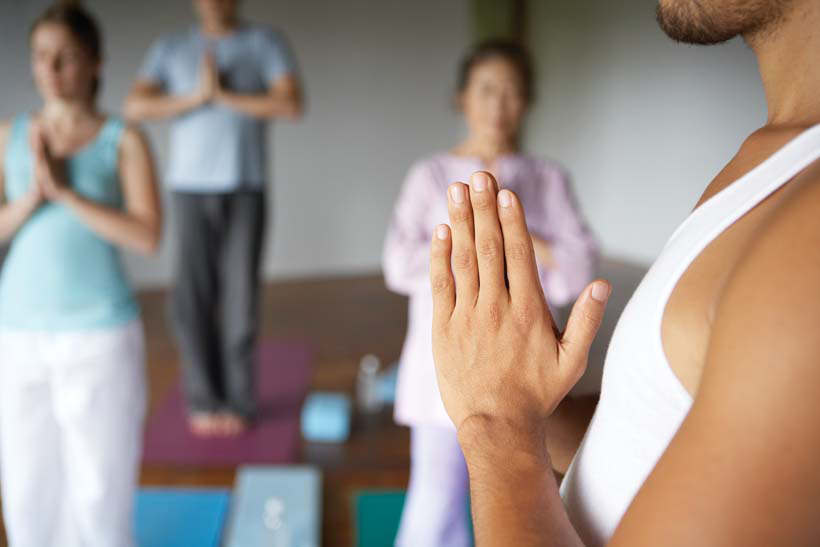
The Retreat Process
On retreat, don’t be surprised if your stuff comes rising to the surface, especially if it’s a retreat with deeper training involved. If you’re constantly active with life and work, when you finally have some free space, subconscious emotions may come up. Take the time and space you need in order to honor your feelings and be with yourself. For some people, this is a natural part of the process of slowing down.
Sharpley and Sudaram describe three stages of the retreat process:
Separation Stage: This is the time when people decompress and become freed or distanced from their ordinary routine as they enter the new retreat surroundings.
Liminality Stage: The transitional phase of entry into a sacred state of anti-structure in which the structure and order of normal life dissolve, everyday obligations cease to exist and new forms of relationships are created based upon a leveling of statuses. This can produce feelings of excitement and bonding between participants.
Re-integration Stage: Described as the process of returning home to everyday existence in society where the techniques and practices that were done on retreat become, as HuffPost writer Ariston Anderson calls it, “a vacation souvenir.” People return to their individual worlds with these souvenirs.
This is one of the greatest distinguishing features between a traditional vacation and a retreat. Travel and retreats both provide you with methods of relaxing and taking care of yourself while away. But, yoga and meditation retreats offer you tools to take home that can help you grow, both inside and outside.
This experience can inspire people to find more satisfaction in their lives if they stay consistent with the practices.

What the Research Says About Wellness Travel
A groundbreaking study in complementary and alternative medicine from the University of California San Francisco, Harvard Medical School, and the Icahn School of Medicine at Mount Sinai sheds more light on what makes wellness travel distinct.
Originally published in Translational Psychology, a group of researchers analyzed blood samples of 94 healthy women ages 30-60 separated into two groups. There was a control group consisting of non-meditating women randomly selected to enjoy their vacation at the La Costa Resort in La Jolla, California, and a group of novice and experienced meditators who were instructed in mantra meditation and yoga at The Chopra Center led by Dr. Deepak Chopra’s instructors.
To maintain consistency between the groups, both were fed a similar Ayurvedic, anti-inflammatory diet and had similar, comparable lodging and accommodations.
The results? Both groups showed positive gene activity in their blood samples for specific markers related to cellular health and aging. This was measured by their regulation of the stress response, telomerase activity, and amyloid beta (A?) metabolism.
The greatest biochemical changes between the groups were related to measurements of stress and immune function. Novice meditators showed fewer symptoms of depression and less signs of stress for a longer period of time following the structured retreat compared to the vacationers.
The regular meditators showed the greatest improvements in antiviral and immune function activity of all groups; they also showed the most significant increase in peripheral blood mononuclear cell telomerase post-retreat. This measurement is predictive of decreases in diabetes, cardiovascular disease, and certain cancers.
Overall, the study led the researchers to differentiate between what they referred to as “the vacation effect” versus the more powerful “meditation effect” found on retreat.
Other studies have shown similar findings. A June 2017 study published in Frontiers in Human Neuroscience found that after a three-month yoga and meditation retreat, people showed increases in Brain-Derived Neurotophic Factor (BDNF) and the cortisol awakening response.
These are markers that signify the reduction of anxiety and depression. People also experienced decreases in inflammatory processes due to higher levels of the anti-inflammatory cytokine, Interleukin-10.
A 2016 study published in the Journal for Psychosomatic Research made the following conclusion, “Meditation retreats are moderately to largely effective in reducing depression, anxiety, stress and in ameliorating the quality of life of participants.”
According to current scientific research, the right kind of vacation can be good for your health.
What’s the right kind? Well, a Yoga or meditation wellness retreat, of course!
Types of Wellness Retreat-Goers
There appear to be several tourism-based yoga and meditation archetypes. These include: The Dedicated Yoga and Meditation Tourist, The Corporate Yoga Tourist, The Religious Yoga Tourist, The Ashram Yoga Tourist, and The Medical Yoga Tourist.
The Dedicated Yoga and Meditation Tourist: This traveler is interested in detoxing from the constant bombardment of the digital world. They’re seeking to dial down the intensity of worldly commitments (especially if they have kids). At the same time, they’re seeking new and improved lifestyle patterns that lead to less stress and more ease.
Often, this traveler wants to set aside their established identity in order to re-invent themselves. They may choose an instructor or studio-led retreat for 3 to 7 days. This category is also for the traditional yoga festival-goer.
Destinations include Bhatki Fest, Wanderlust Festivals, One Love Fest, Esalen in Big Sur, Rythmia Life Advancement Center in Costa Rica, or a retreat with their yoga teacher to a beautiful location like Hawaii, Mexico, Chile, or Bali.
The Corporate Yoga Tourist: Someone who works a high-stress, high-paying job will fit into this category. They need a few days to separate from responsibilities (including their cell phone!). They may go on retreat to re-acquaint with themselves, prioritize life values, and re-assess their role in society, work, and family. Often, they may seek a retreat with structure as well as free time to roam and daydream.
If this person happens to be in a leadership position, they may even inspire their company and/or team to include yoga and meditation programming into their annual corporate meetings. There are a number of scientifically proven benefits and advantages of a corporation offering these practices to employees.
These include improvements in physical health and cognitive performance, enhancements in social connectedness and leadership capacity, decreases in work-associated stress and anxiety, better quality of communication and interpersonal relationships. Other benefits are heightened strategic focus, increased productivity levels, and emotional intelligence skills like empathy, agreeableness, and self-control.
Destinations include properties like the 1440 Multiversity in Northern California, Four Seasons Resort The Biltmore Santa Barbara, or La Quinta Resort & Club, A Waldorf Astoria Resort, in the Palm Springs area where they have special yoga and mindfulness programming for companies that want to enhance their corporate meetings and provide additional resources and lifestyle support for their employees and their families.
The Religious Yoga Tourist: Yoga and religion are classically different. Yoga is a spiritual practice while religion is, well, a religious practice. The Religious Yoga Tourist, however, is typically someone with religious fervor who wants to empower their relationship with the Divine in a kind and loving way. Humorously titled ‘Homo turisticus religiosus’ by Vukonic, Religious Yoga Tourists have many avenues to explore and ways to worship depending on the denomination.
Destinations include church groups heading to a remote location like Questhaven Retreat Center outside Encinitas to meditate on Christ, a Jewish group sharing Old Testament values in a modern context at a place like Alpine Meadows in Angelus Oaks, Kriya Yoga devotees of all religions practicing at the non-denominational Self-Realization Fellowship Hermitage & Gardens in Encinitas, or a Buddhist group doing mindfulness practices at a Dharma Center like Spirit Rock in Northern California.
The Ashram Yoga Tourist: The ashram-goer typically takes to heart the meaning of India’s tourism advertising campaign, Incredible India. They may seek out longer experiences or sign up for a yoga teaching certification as part of the retreat.
While some of these seekers travel alone, they may also connect with other kindred spirits while on the road or even a group seeking transformation. This tourist often travels with a backpack, a trusty Lonely Planet guidebook, and even a musical instrument. In addition, they are driven by deeply profound and existential quest for liberation and soul freedom.
Destinations include the Sivananda Yoga Farm in Northern California, Mount Madonna in the Santa Cruz Mountains, SRF’s Lake Shrine in Pacific Palisades, the Himalayan Institute in Pennsylvania, the Omega Institute in upstate New York, the Art of Living Retreat Center in North Carolina, Kripalu Center for Yoga and Health in the Berkshires, or the Parmath Niketan Ashram in Rishikesh, India.
The Medical Yoga Tourist: Some travelers seek healing. This person is typically looking for a peaceful, tranquil, and supportive environment that will encourage healing and recovery. This can include the Ayurvedic cleansing practice of panchakarma.
The Medical Yoga Tourist may be seeking relief from psychological or psychiatric challenges or traumas, treatment for autoimmune diseases, integrative medicine for cancer, or even cosmetic surgery away from home. In some situations, this traveler will choose a personally inspired retreat perhaps under the care of doctors and nurses.
They may incorporate yoga, breathing, and meditation techniques. The medical treatments often take place in a hospital or a nearby rehabilitation or yoga therapy facility.
Destinations include the Health and Longevity Institute at the Four Seasons Hotel Westlake Village, Hippocrates Health Institute in Florida, Rancho La Puerta in Mexico, Miraval Life in Balance Spa at Monarch Beach Resort, The Jiva Grande Spa at Vivanta by Taj in Madikeri (India), Ananda in the Himalayas (India), or the Beverly Hills Waldorf Astoria (which offers programs to heal in luxury after medical and surgical procedures).
Know Yourself: Ultimately, the type of tourist you are will depend on the type of experience you are seeking. Gently investigate with awe and curiosity what your motivations are for your retreat and you’ll likely find that you fit into one of the categories above. Once you do figure it all out, you’ll be on your path to finding some fun, serenity, and/or healing. Happy travels!
Yoga is the Essence of Modern Wellness Travel
Yoga and meditation retreats have found their way into our global culture as the modern version of Wellness Tourism. In 2017, over 80 million people are expected to try or practice yoga in the US alone.
Across the globe, this number likely tops hundreds of millions. Millions more (including about 12–15% of the U.S. population) are meditators. Many of whom practice regularly at home, in spiritual centers and churches/temples, or on apps like iRest, Headspace, and Simple Habit.
Not surprisingly, industries like tourism, hospitality, and healthcare are increasingly integrating these supportive lifestyle practices from yoga and meditation into people’s stays. Yet, the main distinction between a typical vacation and a retreat may be that the latter not only impacts you and your inner world while you’re there, but provides you with a ‘vacation souvenir’ that will have an effect and express itself all the way down to the level of your blood and genes long after you depart.
The popularity of these practices continues to grow as people immerse themselves in the profoundly transformational cultures on yoga and meditation retreats. An increasing number of options are available for any type of wellness travel experience. Whatever type of traveler you are, the retreat you choose will offer you something unique, powerful, and meaningful.
Focusing your travel on your heart, spirit, and health can have long lasting effects. This is where the magic of the “meditation effect” is experienced. Ultimately, a yoga and meditation retreat isn’t just about the vacation experience, the tools you learn and the shifts you make help support you to become the best version of yourself in your day-to-day life.
Dr. Eden Goldman, D.C., C-IAYT, E-RYT500, is Director of Yoga and Mindfulness at La Quinta Resort, A Waldorf Astoria Resort, where they host 5-star teacher and studio led retreats, along with corporate retreats, and feature an Ayurvedic-inspired vegetarian menu, Manduka mats and props, an enchanting desert and mountain backdrop, 41 swimmable pools for guests, and one of the newest installations in Amanda Giacomini’s 10,000 Buddhas street art series. Professionally, Dr. Goldman is also Director of The Yoga and the Healings Sciences at Loyola Marymount University Extension and co-author of Yoga Therapy and Integrative Medicine: Where Ancient Sciences Meets Modern Medicine. He can be found online on Instagram at @dr.edengoldman
